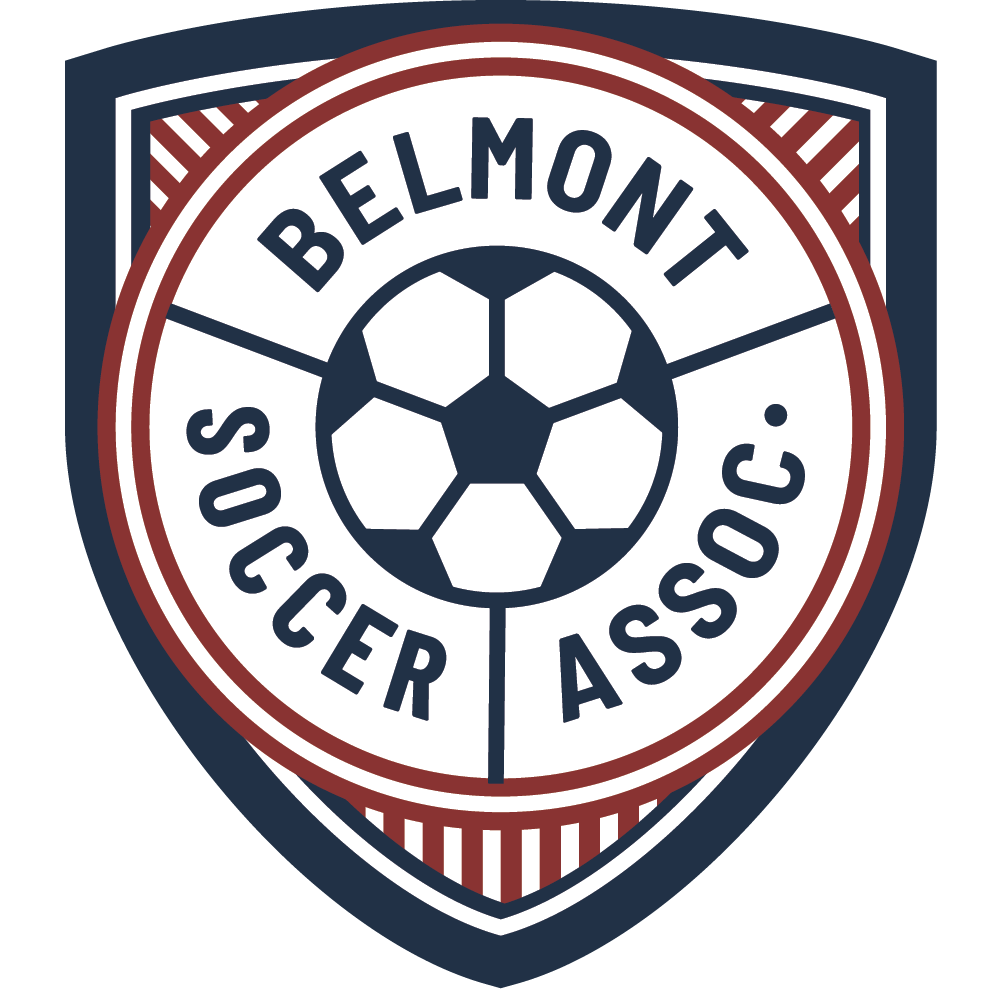Length of game
Two 25-minute halves, running time, with a 5-minute halftime break. Games start at 8:30 and 9:45.
Equipment
Soccer ball size #3. Shin guards are mandatory.
NOT safe to wear during practices and games
Coaches and referees should stop players from playing with any of the following:
- Any rigid or semi-rigid cast or splint
- Hair barrettes, of any material, other than soft pliable plastic or rubber
- Earrings of any kind (you can't just cover earrings with band aids, so if your child wants to pierce his/her ears, please wait until after the season!)
- Jewelry of any sort
- Hats or other headgear…the brim (hard bill) of a common baseball cap is not considered to meet the requirement of soft and pliable material
Game day
Prior to each game, the coach divides the team into two squads of equal ability, each with boys and girls. The makeup of each squad varies each week. Playing time should be as even as possible for all players. Games are six versus six – in 1st and 2nd grades one of these players is the goal keeper.
A referee should blow the whistle to:
- Start each half-blow once.
- End each half-blow three times.
- Stop play for a goal kick or corner kick.
- Stop play to repeat the same play (i.e. corner kick, or if a goalie punts the ball).
- Stop play if a foul has been committed.
- Stop play if a player is injured (Referee will determine which team starts with a free kick after injury is addressed).
A referee will repeat a play in these situations:
Corner kick: A player must kick a corner kick to another player (may not kick the ball twice in a row). Opposing players must be 5 yards from the player kicking the ball. The same player should repeat any incorrect corner kicks.
Goalie punting: Goalies are not allowed to punt in Second Soccer. Those who do should repeat the play by throwing, rolling or kicking the ball on the ground. (Note: If a goalie places the ball on the ground after a save, the ball is in play and may be challenged by the opposing team).
Indirect kicks: Opposing players must be 5 yards from the player taking the kick. A goal cannot be scored on an indirect free kick unless the ball has been touched by another player on either team. Repeat the play if the opposing team does not give space or if a goal is scored.
Kick off: A player must kick to a teammate, not to him/herself (for example, one cannot start dribbling the ball).
Goal Kick: Opposing players must be at the half way line away from the player taking the kick. Coaches need to also teach players to back off to the half way line!
Fouls
- No slide tackles
- No offside.
- A player kicks or attempts to kick an opponent (whether intentional or not).
- A player charges an opponent.
- A player trips an opponent (whether intentional or not).
- A player strikes an opponent.
- A player fights with an opponent or exhibits poor sportsmanship (i.e., poor language, taunting an opposing team, etc.). Referee will indicate to the coach to substitute that player. Coach should remind player of sportsmanlike conduct and decide if he/she should play again that game.
- A player holds an opponent, or holds an opponent’s uniform.
- A player, other than the goalkeeper, uses a hand to stop the ball (unless a player is protecting his/her head, chest or abdomen from an indirect kick). Kindergartners cannot protect the goal using their hands.
Penalty for fouls
All fouls are awarded an indirect free kick. No penalty kicks in Second Soccer. The referee will briefly explain all infractions to the offending player.
Substitutions
Substitutions can be made when there is a stop in play. Coach calls “Subs!” to the referees. Referees keep play stopped until all players are ready. Before re-starting the game, the referees do a quick count to make sure there are 6 players per team on the field (unless slaughter rule is in play). Coaches should make every effort to make substitutions happen as fast as possible since games are on running time.
Goalies
There are no goalies at the kindergarten level.
Offside rules
There is no offside rule in Second Soccer. However, common sense should prevail. Leaving a player hanging out by the opposing goal teaches a team neither good sportsmanship, nor good soccer skills. It’s the Coach’s responsibility to encourage players to move up and back with the ball. If a team or player intentionally takes advantage of offsides (i.e., cherry picks), the referee can ask the player(s) to move to the mid field line when the ball is in their defensive end.
Slaughter Rule
There will be times when one team out plays and out scores the other to the point where it could become demoralizing to the opposing players; in an effort to combat this, the “Slaughter rule will come into effect. If the spread of the game goes to 4 or more goals, the losing team may add another player on the field. If the deficit between the two teams goes below 4 goals the extra player is removed from the field. Adding a player is up to the coach of the losing team, not the referee’s responsibility.
Sportsmanship
At the end of each game players and coaches line up and congratulate the opposing team by shaking hands. Good sportsmanship on the part of the players, coaches, parents and spectators is required, and should be emphasized by the coaches.
General
- Spectators and coaches must stand along the sidelines (never along the goal lines).
- Referees keep game time, not coaches.
